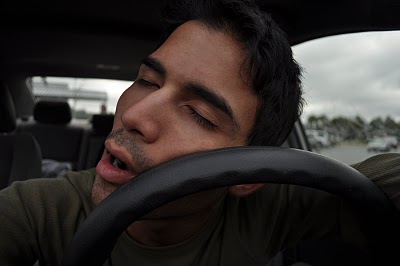If you’re like many American families, you’re hitting the highway sometime this summer or fall and travelling to enjoy some R&R with your friends and loved ones. This means many hours — or even several days — of driving, which can be dangerous, especially if you’re unaware of the risk factors and fail to take precautions.
Commercial truck drivers log thousands of miles each week and know that safety on the road depends on adequate rest and nutrition, proper vehicle maintenance, and smart driving practices. Make sure you’ve gone through your pre-trip car checklist to avoid any potential maintenance issues. The National Highway Traffic Safety Administration (NHTSA) also urges motorists to avoid risky behaviors such as texting while driving, driving under the influence of drugs and alcohol, and driving without adequate rest.
Fatigue is a major risk factor. A driving study conducted by the Virginia Tech Transportation Institute reveals that fatigue is a cause of 20 percent of car crashes. Here are three things you can do to stay alert when driving:
Take breaks.
Build in extra time for breaks during your trip. Getting out of the car every few hours and stretching your legs can help keep you alert while driving. It also provides a great opportunity for switching drivers. If possible, trade driving responsibilities with another adult every 4-5 hours to ensure that the one behind the wheel at any given time is well-rested and facing a manageable drive time. Stopping for rest breaks may mean you don’t break your door-to-door time record, but it will make the journey safer and more enjoyable for everyone involved.
The relationship between drive time and fatigue is so well-known that the Federal Motor Carrier Safety Administration enforces hours of service regulations to ensure professional drivers get adequate rest in order to minimize fatigue-related accidents. The NHTSA reports that the driving while drowsy is a contributing factor in 100,000 accidents annually. That’s why commercial drivers use electronic driver logs to alert them to take breaks after driving for a certain number of hours.
Eat right.
The road is lined with poor food choices. That’s why smart drivers pack nourishing foods to enjoy when hunger sets in. Having satisfying snacks within reach makes it easier to resist the temptations of fast food stops and the unhealthy gas station fare. Skipping meals and consuming high-calorie, sugar-packed and fatty foods can cause energy crashes and reduce a driver’s alertness. Fatigue can also intensify cravings for more unhealthy convenience foods, creating a vicious cycle of highs and lows.
Here are some food ideas for the road:
· Nuts
· Dried fruits
· Dark chocolate
· Cheese sticks
· Whole grain crackers
Hydrate.
Dehydration is a common cause of drowsiness. But don’t wait until you’re thirsty to drink. By the time you feel thirsty, dehydration has already set in. If you’re dehydrated, you are less alert and more likely to make judgment mistakes that could result in an accident. Aside from thirst, other symptoms of dehydration are headache, confusion and dizziness. To stay hydrated, water is the perfect antidote. Try to drink 6 to 8 eight-ounce glasses of water each day. However, people have different water-intake needs so adjust your intake as needed to stay alert.
The National Sleep Foundation warns that frequent yawning, heavy eyes, and blurred vision are indicators of fatigue. If you find yourself getting sleepy on the road, pull over and get some rest.
